The ideas behind the movement system of Virtue's Heaven
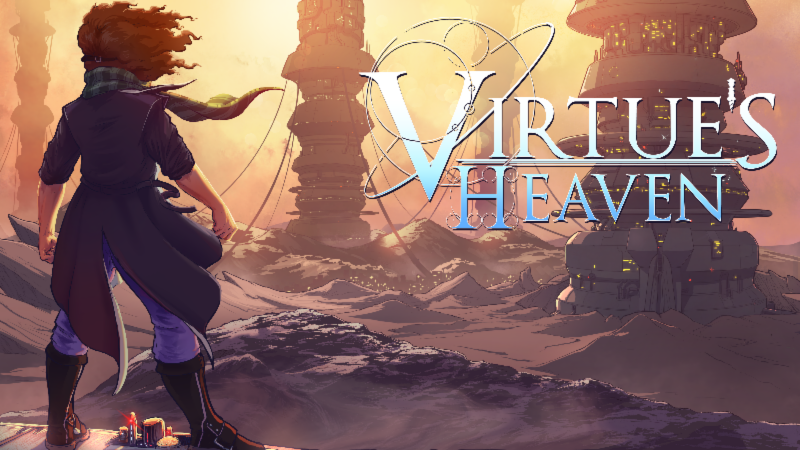
In preparation of Virtue's Heaven's release, I'm going to talk more about the game's history and how it works. If you like this post, or if any of the other posts about this game's development and design interest you, please wishlist the game on Steam and consider buying a copy, once it's out. Thank you!
Virtue’s Heaven exists, because of its movement system, but aside from vague gestures towards it being “improvisational” and “expressive”, I don’t think I ever really tried to explain it.
I think part of why I never explained before, was because most of it wasn’t really planned. The bulk of it came into being within a few months where every now and then I would go “wouldn’t it be cool, if you could X?” with X being a specific move that I was thinking about. Pair this approach with a tendency of mine to disregard my own ideas about game design, and you end up with several years of work and a lot of thoughts that exist, but aren’t really easy to articulate.
Either way, as spur of the moment my approach to building the system was, I still followed a set of principles I gave myself. Especially later on, as I started the long and painful process of figuring out how this all might fit into a playable videogame.
The Inspiration:
These games either put me on this road to begin with, or helped me figure something out later down the line.
Spelunky
This is a bit of a stretch, because Spelunky’s platforming is much more deliberate, but it was with Spelunky where I first thought about how playing a videogame could be similar to playing a musical instrument. Spelunky gives you a set of moves and rules and then throws you into situations that force you to improvise with those.
Hagane
To be honest, this is mostly because of this specific speedrun of it that I watched in 2016/2017. I played it myself a bit later on and found it a bit cumbersome, but I still think that it looks incredible when played by someone who knows what they’re doing.
Castlevania: Aria of Sorrow (Julius Mode)
In a way, Virtue’s Heaven is very much like this. Instead of playing a character that slowly gets more abilities as they go through the map, you play a character that can immediately do everything and just needs to get strong enough to beat the final boss. It also made me realise that I like those parts in Metroidvanias where you just clear the rest of the map, before you finish it.
Noitu Love 2: Devolution
Of all the games that I list here, this is probably what gets closest to Virtue’s Heaven just in terms of the raw spectacle of things. It controls very differently, but the sheer amount of explosiveness in it, as well the ease of movement is fairly similar. It was also one of the games I went to when I finally sat down to figure out how to make better boss fights for Virtue’s Heaven.
Celeste
Most of the movement system in Virtue’s Heaven already existed for a while when I played this game, but it still served as a good source for ideas on how to communicate motion visually.
The Intention:
As I said, most of the initial system was built without much thought aside from me wanting things to look “cool”. However, during the last few years, as I had to actually think about what I wanted this all to be, I had to develop some kind of guiding principles for it. Some of these existed for quite some time, while others I basically had to learn by first doing it wrong. A lot of the bigger differences between the 2022/23 version of Virtue’s Heaven and this final version, came from me realising very specific things which that older version didn’t do, and thus caused it to feel not quite right.
Anyways, here are the main principles I tried to keep in mind while I made this game:
- Playing Virtue’s Heaven should feel like you’re improvising on a musical instrument.
- Your moveset is not a toolbox. There are no red enemies that you need to hit with a Dash-Attack to make them vulnerable.
- Challenges should be more about “how” the players are able to get past them and much less about “if” they are able to.
- Player’s movement abilities should not be limited in some arbitrary fashion, unless there’s no way to avoid it. STAMINA BARS ARE A BORING!
- Players should be encouraged to play the game recklessly and fast, not slow and deliberate.
- Players should be allowed to trivialize the game.
- If possible, the desired style of play should be positively reinforced, without punishing an undesired approach.
The Implementation:
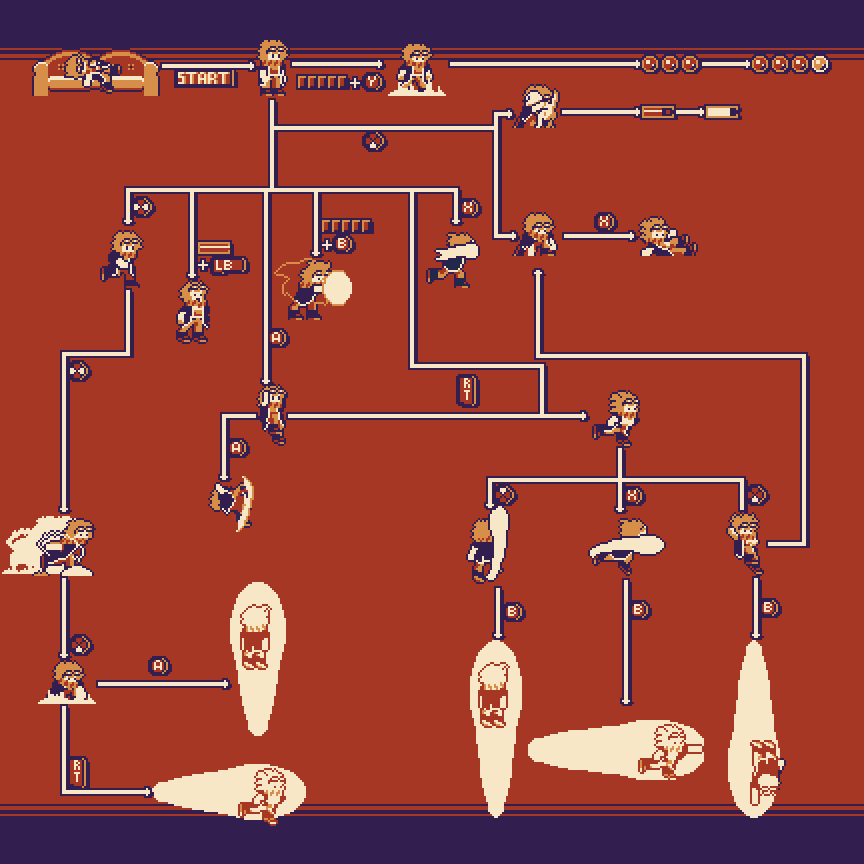
On a basic level, each move consists of three parts:
- The Player’s current state
- A directional input
- A button press
Most of the time, simpler moves only rely on one, or two of these things, whereas more complex actions need to fulfill very specific criteria in all three.
Because most moves have been built first and foremost around the idea of creating motion and spectacle, a lot of them have overlapping use cases. You can attack an enemy that’s right in front of you, either by punching them, sliding into them, performing a dash attack, or a charge attack. The outcome is mostly the same, in that the enemy takes damage, however what action you perform potentially changes what options you have after you’ve performed it.
This overlap and the variation in potential follow-up actions does create a large space for varied playstyles, depending on player experience, knowledge and preference, it also, when pushed to its limits, creates long sequences of free flowing spectacle.
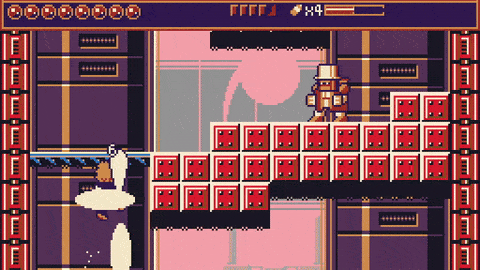
Unintentional thematic connections
Sometimes you design a system and don’t realise how your particular approach also creates further, unintentional structures and thematic connections. This is especially true, when you build these systems without much advance planning.
Virtue’s Heaven is a violent game and as with all of my other violent games, I tried to frame the violence in a way where it's being used for a specific purpose. I mostly approached this from a narrative, world building and structural perspective, but I honestly also should’ve thought about the way the violence itself is delivered.
There are two things I only noticed fairly recently about the movement and combat in Virtue’s Heaven.
Motion is violence
Almost every movement option in the game can also be used as an attack. To attack an enemy is to move towards them, or into them. Moving through a space also means that you will likely hurt whatever is in your path.
Your Body is your weapon
Last year, when I updated Virtue’s Heaven’s steam page and looked at the pages of other Metroidvania games, I noticed how many of them specifically mentioned the type of weapon the player was supposed to use. I found this very strange, but it also caused me to randomly say: “Your Body is your weapon in Virtue’s Heaven!” and even though I meant to poke fun at this obsession to advertise your game via its chosen instrument of violence, I also noticed how this idea of weaponizing your own body connected to the game’s sense of desperation?
Especially that second point was something I tried to keep in mind as I was building towards the game’s final version. I wanted to find a good balance between this sense of desperation that causes someone to repeatedly throw their body into danger, while also admitting that there’s a sense of joy and beauty that comes with this type of struggle.
Part of me wishes I had known these things a bit sooner, so that I could’ve built the entire game more intentionally around these concepts, but I still think that it’s interesting how they are still connected to the rest of the game.
Some issues I encountered
Tutorialisation:
At some point it hit me that maybe one reason why Metroidvanias tend to spread their movement upgrades across the entire map, is because it makes it much easier to teach the players how to use each one of them. Starting a game and then immediately going “and here are a half-dozen or so moves that I’m expecting you to perform right away” turned out to be a bit of a problem.
Complexity and openness made everything more difficult
Having a lot of these moves share similar use-cases introduced further sources of insecurity. For a long time, I assumed that I would increase the game’s difficulty, if I would restrict the space around the player, when actually the opposite was the case. An open space with a large moveset creates a huge degree of variation in terms of potential paths a player might take. That makes enemy placement tricky and it also serves as a huge source of confusion for players.
In a way, I succeeded in making a musical instrument, but I did not consider how to properly get people from playing a few notes, to improvising their own pieces.
This all also led to a lot of players gravitating towards a very limited set of moves that were easy to perform, powerful, but also a bit repetitive.
The game is hard to play on a keyboard
There’s something about the amount of inputs that you need to perform that just makes the game deeply uncomfortable to play, with anything but a controller. It’s something I still would like to figure out before the game’s release, or at least I want to find a default setup that isn’t completely awful.
Confronting those issues
Or: Why this game has a style-system
In regards to tutorialisation, I decided to do my best and just get out of the way of the players. There is a short tutorial sequence at the beginning, but once that’s done, you’re on your own. I don’t want to slow people down every five minutes to tell them about another incidental system that they might only use once or twice during their entire playthrough.
Though it seems pretty minor, what caused the most headache was how to deal with players who just spam the same move over and over again, without having to break one, or several of the principles I laid out before.
To some degree, I’m okay with people doing it. It does make the game much more boring and there’s a real risk of players optimising the excitement out of it, however I really didn’t want to just restrict, or “nerf” the abilities in question. I personally think that the idea of balancing a (single player) video game is garbage and that it should be okay for players to have access to some things that are a bit overpowered and broken. Then there was also the whole “STAMINA BARS ARE BORING!” part of my principles that kind of prevented me from doing the easy thing.
There are several minor things I did (for example, the most commonly spammed move is pretty ineffective in boss fights), but my main solution was to try and build a system that rewards players for having a more varied playstyle, without actively punishing those that don’t.
When you watch Virtue’s Heaven’s trailer, you might occasionally see words appear above the player’s head. Words like “Reckless”, or “Beautiful”. These are indicators of the game’s Style system. Yes, it has one of those! Even though I usually hate them, because I always end up getting a “C” ranking, even though I personally thought I did at least a “B+”. Anyway, the way this ranking system works is that it keeps track of which attack you performed on an enemy, and the more varied your attacks, the more it increases. If you keep using the same attack, especially on the same enemy, it will stop increasing.
Aside from feeling cool and validated, when a piece of digital media tells you that you’re beautiful, what other benefits does having a higher rank give you? Well, there’s also a damage multiplier attached to it. When done well, you can at least double your damage output, just by virtue of occasionally punching an enemy, instead of just dashing into them.
As a demonstration, behold these two gifs where I beat up a placeholder enemy:
Spamming just the Dash-Attack
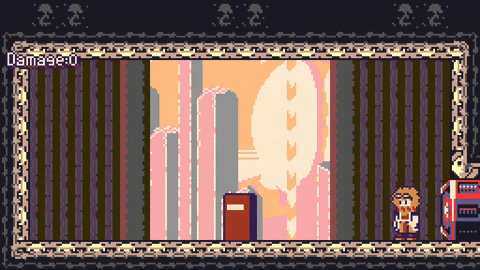
Spamming the Dash-Attack, while also doing a kick every now and then
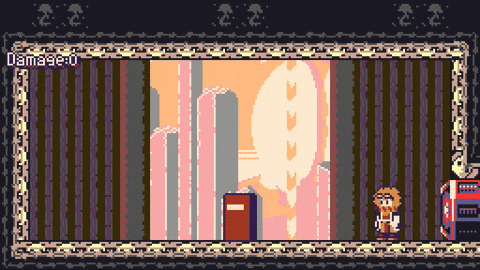
Now these are a bit skewed, because the double jump attack does a bit more damage by default, but you can still see on the numbers themselves, that just performing one different attack between each dash-punch is enough to boost your entire damage output by almost 50% compared to just being boring.
I admit, it’s a very soft and not very well explained way of nudging players towards not using the same attack all the time, but I also can’t really go around proclaiming that I wanted to make a game that gives you a lot of options and freedom to find your own approach and then get angry at people for being a bit monotonous.
In a way, like a lot of the other issues that come with this very specific approach, these are things I just have to live with. If I really wouldn’t be okay with players not engaging with what makes Virtue’s Heaven interesting to play, then I would’ve made a different game. I would’ve introduced enemies that needed to be hit with a specific sequence of attacks. I would’ve introduced a stamina bar, or something similar (disregarding the fact that the game had one of those at some point and it was bad). I would’ve spread out the movement upgrades in such a way, that you only get access to the overpowered, spammy dash-punch right as the game was about to end.
However, these games exist already, whereas Virtue’s Heaven does something that not a lot of games have tried. Maybe there’s a reason for it, because I can now see how it causes issues (just look at the amount of time it took me to make this game in the first place), but at the same time, it’s fun to try something different and just see what comes from it.
That was the whole point of this project and I will forever maintain that you will not find anything out there that plays like it. Some games are similar, but nothing looks, feels and sounds the way Virtue’s Heaven does.